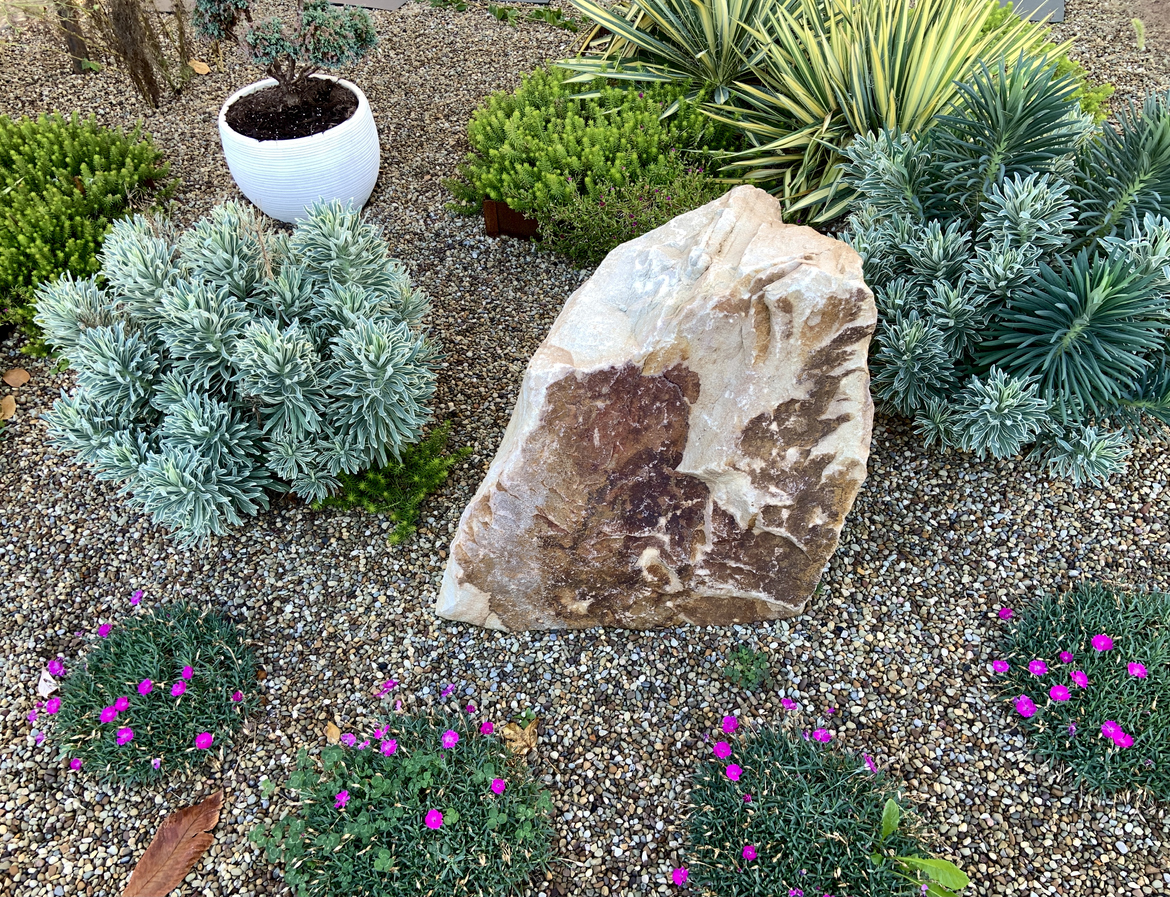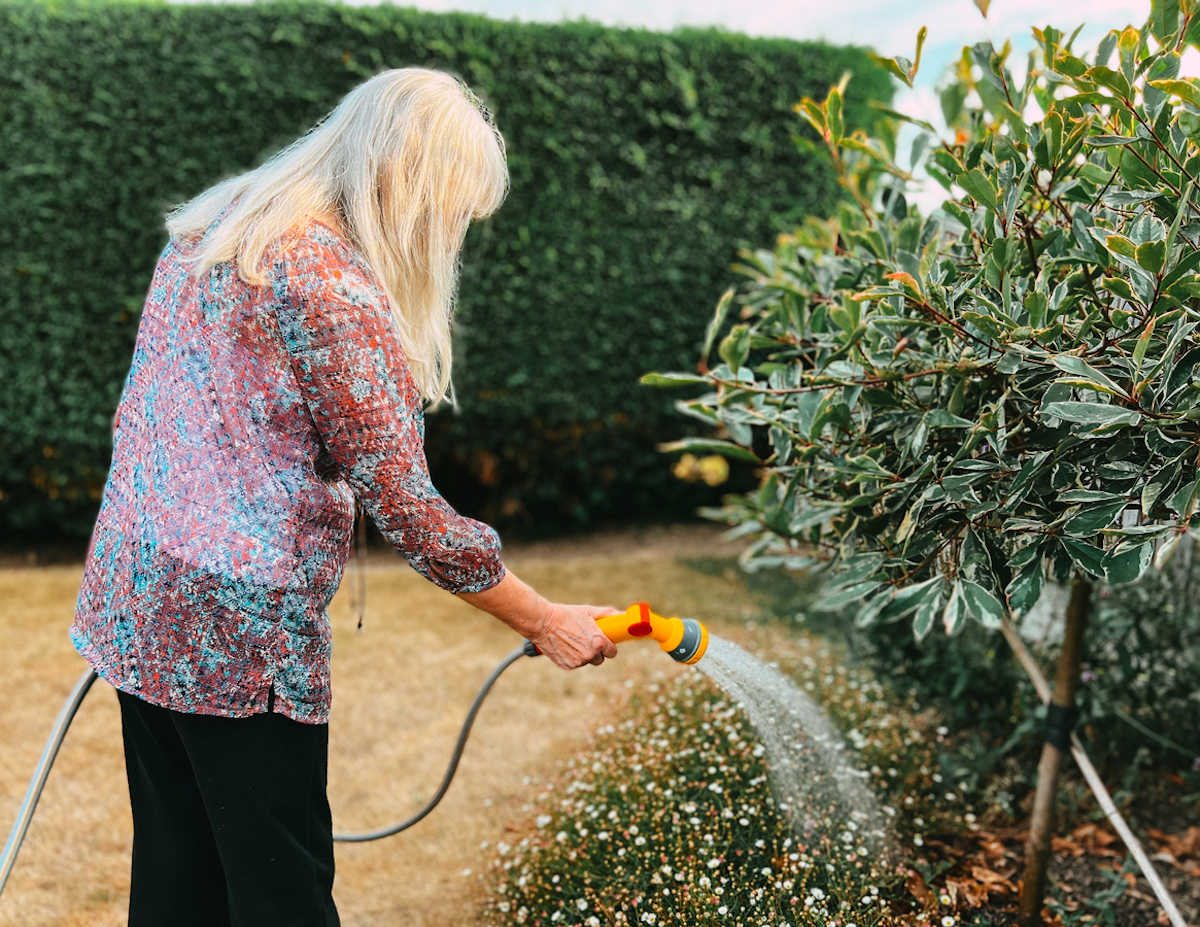

We may earn revenue from the products available on this page and participate in affiliate programs. Learn More ›
The U.S Geological Survey defines drought as a “period of drier-than-normal conditions that results in water-related problems.” According to the National Integrated Drought Information System, about 41 percent of the United States and 49 percent of the lower 48 states are currently in a drought. Unfortunately, drought periods affect more areas of the country every year and last longer. Frequent droughts mean many homeowners will experience water restrictions.
Moisture restriction is a significant stressor for plants in a landscape. However, lack of water affects your home, insects, soil, and air quality as well. We spoke with Dr. Chris Fields-Johnson, technical advisor at The Davey Institute, to find out what issues a homeowner may experience when abiding by water restrictions and what they can do to help curtail effects of cutting back on watering, along with the problems that come with droughts in general.
RELATED: Drought-Tolerant Landscaping: Top Tips for a Hardy, Low-Maintenance Yard
Growth Reduction
All plants need water to live. During a drought, a plant’s first response is to close its leaf stomata to reduce transpiration. When this happens, the plant absorbs less carbon dioxide and photosynthesis slows. This entire process reduces growth.
Dr. Fields-Johnson says to expect some dieback and growth reduction during a drought. However, established plants with healthy, deep root systems will survive a dry spell. If you see growth reduction in them, don’t stress. Once the plant receives water through natural rainfall (or watering), it will continue growing. If your area allows you to water occasionally, make it count, especially during peak heat.
Water slowly but deeply. “You want to try to match the infiltration rate of that soil,” explains Dr. Fields-Johnson. “Putting too much water in one spot at one particular period will overwhelm the soil’s ability to absorb that water—it’s just going to run off and be wasted.”
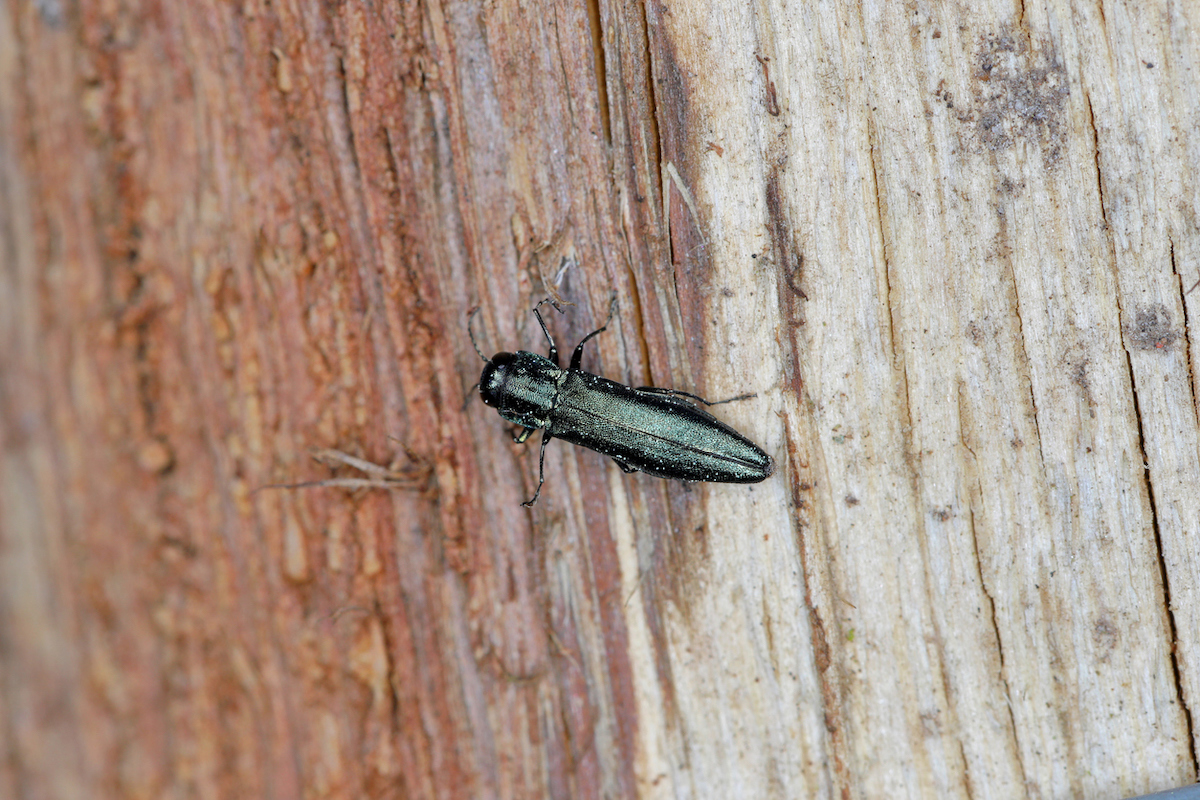
Increase in Pests
When trees and shrubs are stressed, they are more likely to have insect attacks, Dr. Fields-Johnson points out. Common insects that are attracted to drought-stressed plants include borers and bark beetles. Other plant-sucking insects that benefit from dry conditions include aphids, beetles, caterpillars, mites, and sawflies.
“The pests will continue to do their thing, even if plants are under drought stress,” says Dr. Fields-Johnson. “So you will have to treat the plant appropriately and use integrated pest management (IPM) to help reduce pests to tolerable levels.” IPM is an effective and environmentally sensitive approach to pest control, relying on a combination of common-sense practices to help reduce pests in the landscape.
If you see an uptick in pest damage during a drought, it’s a good idea to call an expert who uses IPM principles to help reduce the damage to your landscape plants.
RELATED: The Invincible Yard: 25 Ideas for Lazy Landscaping
Poor Soil Structure
“One of the most important things you could do is to build organic matter and structure in soil,” Dr. Fields-Johnson remarks. Soil structure affects the drought tolerance of your plants. Depending on the soil type, less moisture can lead to erosion or compacted soil.
According to Dr. Fields-Johnson, soil with helpful organic matter helps water infiltrate better. Organic matter soaks water up and stores it in a state that plants can use later on. An easy way to improve soil structure is to add mulch around your plants. Using organic mulches such as wood chips, shredded bark, pine straw, and leaves help conserve soil moisture and reduce competition for water from weeds. As a bonus, mulch improves the soil structure in native soil as it breaks down.
Branch Dieback
Gardeners should prune dead and dying branches on landscape plants. “If you get to the point where drought is causing branch dieback,” says Dr. Fields-Johnson. “That’s an indication that you’ve got pretty serious stress going on.” The main cause of large branch dieback during a drought is typically pests like borers that attack a stressed tree. Larger trees that begin to lose branches pose a safety risk to you and your home.
Dr. Fields-Johnson states that anytime a homeowner starts seeing major branch dieback, it’s best to call a tree professional to do a preventive treatment for borers. “If the borers get into the tree, within a matter of days, the tree can be dead; it’s usually a good idea to cut out the dead material,” he explains.
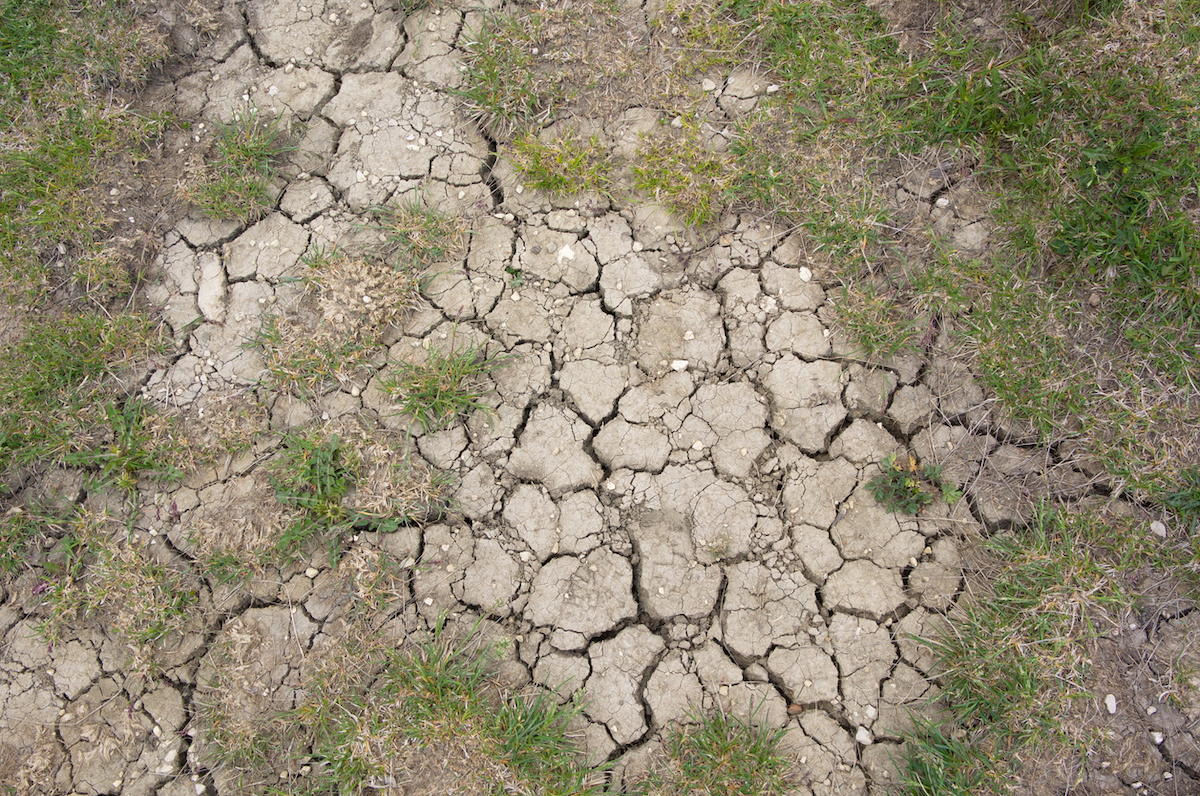
Hydrophobic Soil
During prolonged drought, soil can become hydrophobic, or water-repellent. Soils have pores that vary in size, depending on the type, and these pores hold moisture and air. When the soil dries out, the pores fill with just air. As moisture becomes available, it takes the soil time to reabsorb the water.
However, using large amounts of water when watering hydrophobic soils is counterproductive because most of the water will run off before the soil can absorb it. “Most people typically use more than twice the amount of water they really need,” says Dr. Fields-Johnson. The solution is to water more frequently, using smaller amounts of water. Once your soil returns to its normal water-holding capacity, it’s time to adopt smart watering habits.
“Many people water or run irrigation systems too frequently or for too long of a period.” clarifies Dr. Fields-Johnson. “It’s not necessary, in most cases, to water plants every day or even every other day.” He recommends allowing the soil moisture to fluctuate and water just enough to bring your rooting zone up to field capacity. “That’s the maximum amount of water the soil can hold before it starts draining away,” he explains.
Shrinking and Swelling Soil
The USDA defines shrink–swell potential as “the extent to which the soil shrinks as it dries out or swells when it gets wet.” This phenomenon is influenced by the type and amount of clay present in the soil. During a drought, high-content clay soil will shrink, causing the ground to display cracks. Shrinking and swelling of soils can cause damage to foundations, roads, and other structures by exerting force on structures when soil properties fluctuate.
“There are different ways you might deal with shrink-swell soil issues,” says Dr. Fields-Johnson. If there is no damage to your foundation, then spraying water periodically around your home’s foundation will help prevent the soil from shrinking. ” If there’s a restriction in place,” advises Dr. Fields-Johnson, “You might consider setting up a gray water recycling system to spray down your soil and water landscape plants.” Gray water is wastewater from non-toilet plumbing systems such as washing machines, showers, baths, and rainwater.
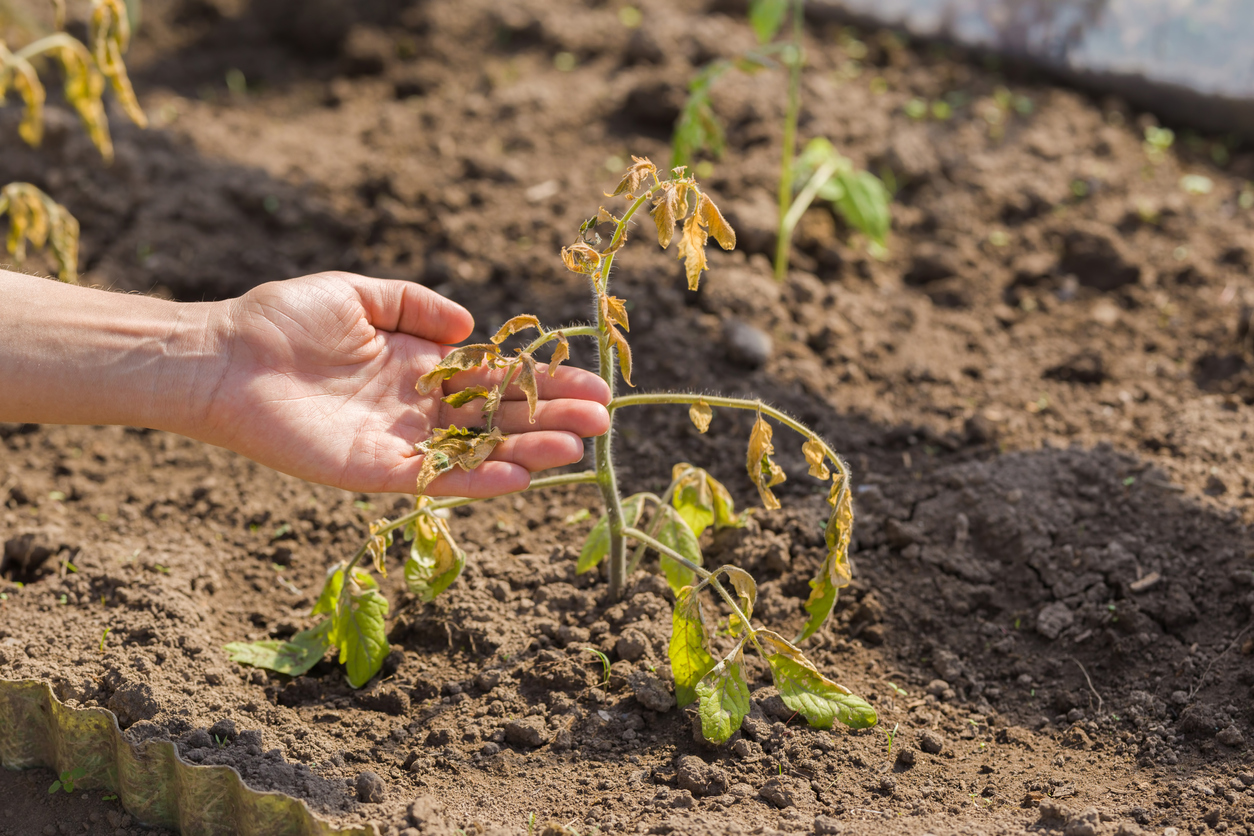
Decrease Pollinator Populations
“If plants can’t get enough water during the flowering season, they’re not going to bloom as much, or they might not bloom at all,” says Dr. Fields-Johnson. A decrease in water also means a reduction in nectar. Pollinators like bees and butterflies need nectar to survive.
Although a pollinator reduction won’t be detectable immediately, it will be noticeable in the following growing season. Practicing good watering habits, adding organic matter to your soil, and planting native or drought-resistant plants will help mitigate drought’s effects on pollinators.
RELATED: 30 Water-Saving Habits to Start Right Now
Soil Erosion
“When things dry out, and you lose all that green cover on the soil, this causes wind erosion which leads to more particulate matter in the air, reducing air quality,” explains Dr. Fields-Johnson. Moreover, the lack of vegetation to hold the soil leads to surface erosion. When the rain finally arrives, the soil and plants will take some time to rebound.
Using native or drought-resistant plants in your landscape can help minimize dieback during a drought. Even if you are in the middle of a drought, it’s still an excellent time to study the native plants of your region. “If you don’t want to stick with native plants, you could also study plants from similar regions,” suggests Dr. Fields-Johnson. Once established, native and drought-resistant plants need little attention and can make it through long periods of dry weather, and most importantly, prevent soil erosion.
